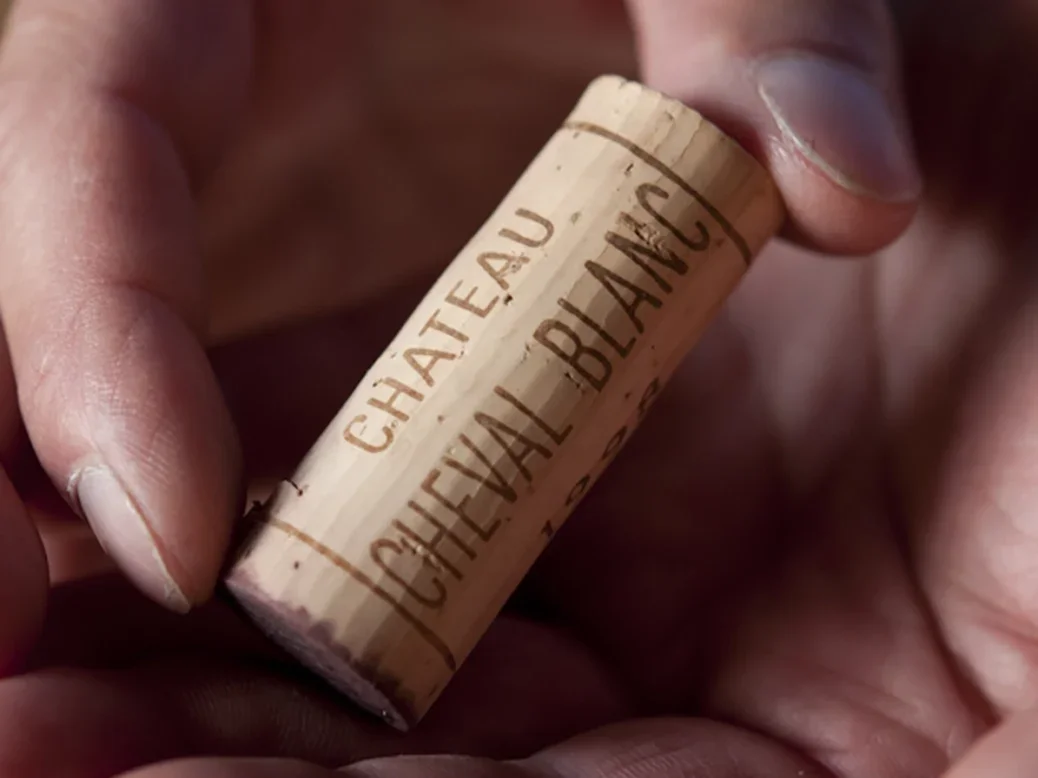
Simon Field MW is given a typically warm welcome at Château Cheval Blanc, where he enjoys the “sweetness and austerity” of the St-Emilion thoroughbred’s 2022 vintage.
Amidst the plethora of charts and tables used to describe Bordeaux (rainfall by month, sunshine hours compared with previous years, tartaric acidity versus pH levels in the must, etc etc) a more whimsical graph may plot the reputation of a château against the warmth of the welcome offered when one visits. Given that more than 6,000 professionals descended on Bordeaux to sample the ‘22s in mid-April, one might have suspected a downward trajectory, or at the very least a near-horizontal running along the X axis. One of the more pleasing enigmas, in my experience at least, is how this proves not to be the case at all; quite the reverse. One has only to think of the generosity of insight and genuine warmth of spirit from doyens such as Alexandre and Guillaume Thienpont (VCC), Jacques Thienpont (Le Pin), Edouard Vauthier (Ausone), and Olivier Berrouet (Petrus) inter alia, to underline the point. How on earth do they manage it? Who can say. The technical director is, after all, primarily concerned with making the wine. A spirit of confidence and self-belief, not without genuine humility, seems to be the answer.
Cheval Blanc: A visit of unalloyed pleasure
Among the most welcoming is Pierre-Olivier Clouet, the technical director of Cheval Blanc. Once one has mastered the marginally irritating (automated) chain across the access road, a visit here is one of unalloyed pleasure. The micro-environment helps; the fruit trees, plants, and lake make up part of the “permaculture” as they describe it; beehives buzz and animals graze. Then the beauty of the streamlined undulating cellar (built by Christian de Portzamparc in 2011), its two “waves” of concrete housing 52 vats (20 to 100hl) with the most beautiful discretion. And finally, Pierre-Olivier himself, tall, smiling, enthusiastic, but not without the occasional challenging statement. More of that later.
Cheval Blanc covers 39ha (96 acres) on the western flank of the appellation, 5 km (3.1 miles) or so away from the medieval village and surrounded by Figeac on one side and the first vineyards of Pomerol on the other. Its soils, famously, do not include the limestone which covers the St-Emilion plateau and some of its Côtes; rather alluvia from the Quaternary period, made up approximately half and half of gravel and clay. The varieties at Cheval Blanc are divided between Cabernet Franc (52%), Merlot (43%), and Cabernet Sauvignon (5%). Most importantly of all, it is the Cabernet Franc which is (mainly grown) on the clay and the Merlot on the gravel. This is counter-intuitive at the very least, all the more so when one remembers that Petrus is made up of Merlot on clay, Lafleur of Cabernet Franc on gravel, and Ausone, less relevant in this context, of Cabernet Franc on limestone.
Bordeaux 2022 Field notes: Heightened expectations
Bordeaux 2022 Field notes: Fear no more the heat ‘o the sun
Pierre-Olivier similes. Not only is Cabernet Franc the variety “du moment” but it also is proving well adapted to the warmer conditions and this distinctive terroir, 2022 the most striking example … “resilient” to use one of the buzzwords of the vintage. Cheval Blanc, whilst shunning the bureaucratic shakes of accreditation, has long been a forerunner on issues of sustainability (they talk about “agroecology”) and now, with its ability to vinify by parcel, is equally adept in the (beautiful) winery. The focus on the vineyard is elegantly illustrated by a plaque of stencilled metal at the end of each row, listing the variety, the soil type, and the year of planting, also, if appropriate, the “name” of the plot. Lapidary identification does not preclude pragmatism in the winery. It just so happened, however, that in 2022 all but two of the 53 plots were successful enough to merit, to a greater or lesser degree, inclusion in the senior wine, and, as a result, there was no Petit Cheval (the second wine). A one-horse race with only one winner!
Cheval Blanc 2022: Cashmere with an edge
And what about 2022? If any vintage exemplifies LVMH’s group winemaker Pierre Lurton’s descriptor of “cashmere,” it is this. But it is cashmere with an edge, with grip, with a quiet power which lingers long on the palate and in the mind. The Merlot is imperious and plush, but it is the Cabernet Franc which provides the backbone and orchestrates the alchemy which yields both sweetness and austerity.
“Aha, sweet austerity,” I say, fond of the occasional oxymoron. Pierre-Olivier indulges me but then decides to drop his bomb shell. “The 2022 is lovely, magnificent, but what it represents is a warning that Bordeaux could very soon be in a bad place.”
The somewhat enigmatic meteorological tableau has worked (fantastically) in 2022, but it may well not be repeated. Things are set to get more and more challenging. “On s’est glissé dans un trou de souris” he says, in French this time. Very roughly translated, and for want of an appropriate equestrian metaphor, “we are (or could well be) in a tight spot.” For the time being, however and self-evidently, the going is still very good for this beautifully groomed thoroughbred.






